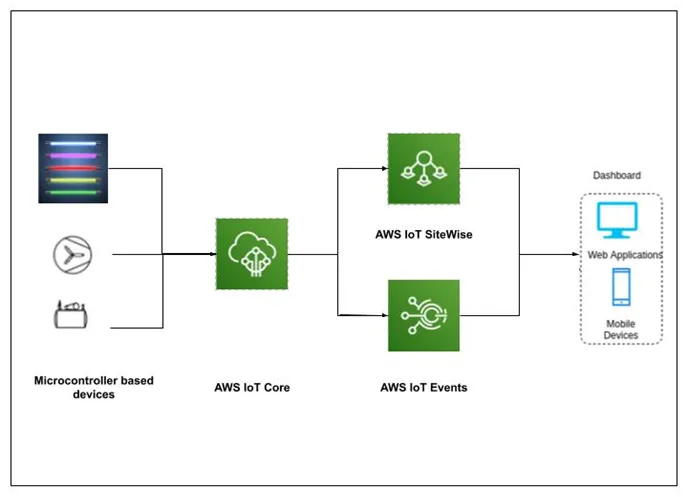The field of ‘Smart' appliances has evolved due to the convergence of multiple technologies, including robust embedded systems, commodity sensors, wireless network systems, etc. These fields collectively and independently enable the Internet of Things (IoT). The internet of things is defined as the networks of physical objects that are enabled with sensors, software, security, and other technologies to connect and share data with other devices and systems. The Internet of Things aims to have devices that self-report real-time data, improve efficiency, and bring vital information to the surface more quickly than a system depending on human intervention. The same internet protocol (IP) used to identify computers over the World Wide Web (WWW) is used by these devices to allow them to communicate with one another. The IoT technology in the consumer market is synonymous with the products having the concept of smart devices and appliances, for example, thermostats, security systems, cameras, etc.
AWS IoT SiteWise is a managed service that allows you to collect, Model, analyze and visualize data from industrial equipment at scale. You can easily create web applications for non-technical users using AWS IoT SiteWise and analyze your industrial data in real-time. By configuring and monitoring metrics such as mean time between failures, you can have insights into your industrial operations. Amazon IoT SiteWise is used to model physical assets and facilities, compute performance metrics and create fully managed web applications to analyze equipment data. AWS IoT SiteWise focuses on understanding and optimizing your operations rather than building costly management apps. Using AWS IoT SiteWise edge, you can process your data on local devices. AWS IoT SiteWise can be used to store data generated in a fast and scalable time-series data store. In AWS IoT SiteWise, there are two tiers of storage for equipment data: Hot tier and Cold tier. The hot tier is used for real-time applications, and the cold tier for analytical applications. The data used by industrial apps that need fast access to the latest measurement values are stored in the hot tier. It includes apps that use real-time metrics with an interactive dashboard. The less frequented data that can tolerate high read latency is stored in the cold tier. This data, stored in the cold tier, is used to create apps that access historical data like a dashboard, artificial intelligence (AI), historical reports and backups, etc.
There are two categories in AWS IoT SiteWise, i.e., Model and Assets. Let's explore each of them further.
To create an asset model, you have to navigate the AWS model
console. In the navigation panel, choose Model. Next, decide
to make a Model.
On the create a model page, you have to
enter a name for the asset model that must be unique across
all models in your account, e.g., Tubelight. You can add
attribute definitions to the Model. Attributes represent
information that rarely changes.
You can also add
measurement and transform definitions to the Model.
Measurements represent data streams from your equipment and
convert formulas that map data from one form to another.
Adding this information is optional.
Next, you can add
metrics and hierarchy information to the Model. Metrics are
formulas that aggregate data over time intervals, and
hierarchies are relations between the assets. You can also add
tags to the Model. Adding this information is also optional.
After this, choose Create Model.
To create an Asset (console), you have to navigate the AWS IoT
SiteWise console. In the navigation panel, choose Assets.
Then
choose to create an Asset. On create Asset page, select the
Asset model from which you have to make an asset. Give a name
to your Asset. You have an option of adding tags to your
Asset.
After this, choose Create Asset.

Organizations can easily set up the monitoring dashboards for all their assets distributed across different geographical regions. Organizations can also compare the performance of other devices and predict the performance issues at early stages.
Using AWS IoT SiteWise, you can monitor the performance of home appliances. We can also create a scheduler to turn off the devices and create a daily/weekly routine.
IoT applications are used by many in their homes, factories, businesses, etc. This blog post gives an insight into AWS IoT SiteWise, its essential components, and its benefits. We have briefly explained the configuration of AWS IoT SiteWise on your machine and shown step by step process to create Assets and Models. The results are worth the wait and how different sectors/domains use it daily. For more info, get in touch with our certified AWS experts.


